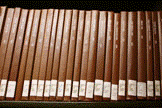Anthropology, Department of

Department of Anthropology: Theses and Student Research
Date of this Version
5-2012
Document Type
Thesis
Citation
A thesis presented to the faculty of the Graduate College at the University of Nebraska in partial fulfillment of requirements for the degree of Master of Arts
Major: Anthropology
Lincoln, Nebraska, May 2012
Abstract
In August of 1720, a Spanish expedition of more than one hundred soldiers, settlers, and Native American allies was destroyed by a group of Pawnee Native Americans at the confluence of two rivers in Nebraska. The precise location of the battlefield has been the subject of debate over the past century, and a systematic archeological investigation to attempt to locate and study the remains of the battle had never been conducted. In order to determine the most likely engagement location and allow an archeological survey of the battlefield site, the author conducted a multifaceted study of the campaign. This included an examination of the available primary sources, including a surviving portion of an expedition member’s diary, for information on the force’s composition, armaments, and route to Nebraska. The Segesser II painting, an artwork on animal hides depicting the final battle of the Villasur Expedition, was also examined to shed light on the battlefield’s location, the arms and armor of the combatants, and the possible participation of French soldiers in the engagement. A geospatial analysis of possible marching routes of the campaign resulted in the determination of the route Villasur likely followed to Nebraska, as well as the probable location of the battle. A crew of University of Nebraska, Platte County Historical County, and volunteer personnel then conducted a metal detector survey in March of 2011 to the southeast of Columbus, Nebraska, revealing that fluvial action of the Platte River over the intervening centuries had most likely disrupted any battlefield artifacts once present in the survey area. However, the areas with the highest probability to contain battlefield-related artifacts could not be accessed during this search effort. Though the survey recovered no physical remains from the battle, the overall investigation of the Villasur Expedition proved invaluable in characterizing the engagement area and the composition of the archeological assemblage associated with the battle, and contributed to the study of the archeology of catastrophic military defeats.


Comments
Copyright 2012, Benjamin J. Bilgri